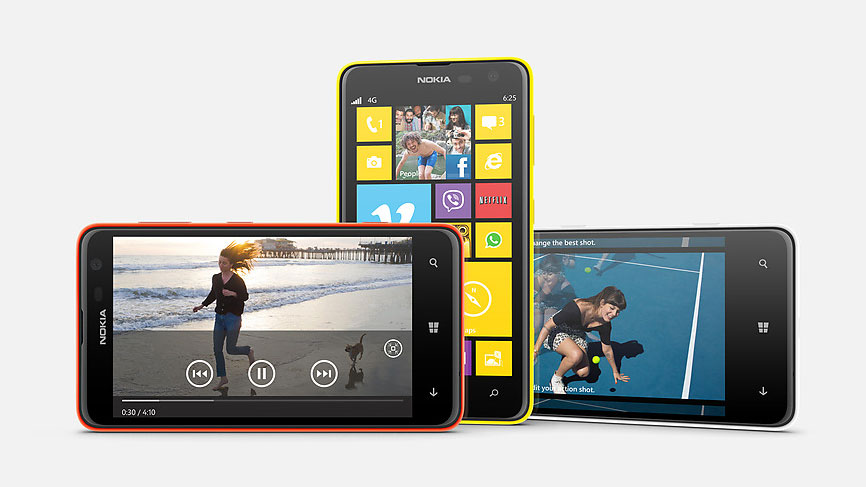TechRadar Verdict
The 625 is snappy enough and does all the usual Windows Phone things, but it's overpriced, the camera isn't great and the screen isn't very good: it's bigger but less sharp than its predecessor. You'd be better off with a Lumia 620 or a Nexus.
Pros
- +
Good battery life
- +
4G enabled
- +
MicroSD slot
- +
Decent music player
Cons
- -
Low res screen
- -
Overpriced
- -
Average camera
- -
Only 8GB of storage
Why you can trust TechRadar
Before Nokia was dissolved into Microsoft it launched some great low cost smartphones, such as the Nokia Lumia 520 and Nokia Lumia 620- both of which were of a quality usually reserved for higher-end handsets.
With the Nokia Lumia 625, the company seemed to be trying to push the limits of what's possible on a low-end handset even further by giving it a big 4.7 inch screen and including 4G support. It was an ambitious goal, so has Nokia pulled it off or has too much been compromised?
With a price tag of around £125/$150 (roughly AU$195) it seemingly ticks the value box, though it's slightly more expensive than the older Nokia Lumia 620 and the budget Nokia Lumia 520. In fact if anything it's more in line with the prices of the Nokia Lumia 720 and Nokia Lumia 820, both of which can be had for around £180/$200 (roughly AU$260).
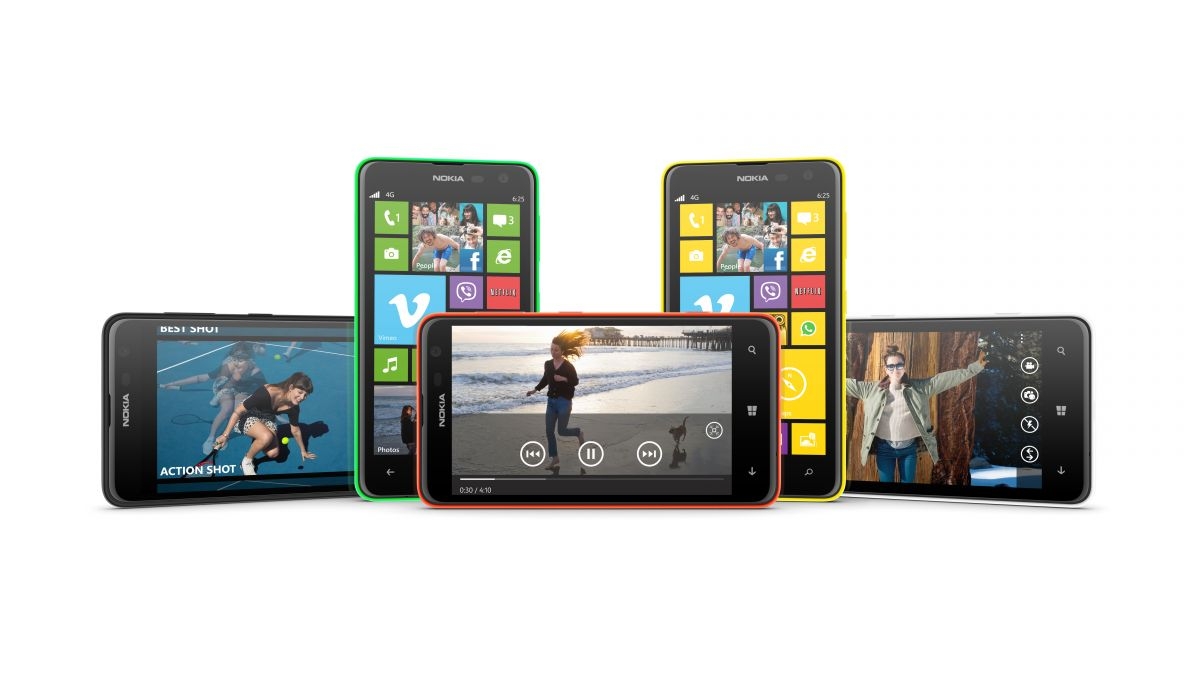
It's also now been superseded by a bunch of newer Lumia handsets, such as the Nokia Lumia 630, the Nokia Lumia 635, the Microsoft Lumia 640 and the Microsoft Lumia 535 and these are all pretty affordable too. The Lumia 635 can be seen as its successor and starts at around £100/$120/AU$155, while even the more powerful Lumia 640 can be had from roughly £130/$250/AU$320.
As smartphones go it's still priced pretty low, but whether it offers enough to justify the premium is another matter entirely, particularly since phones like the Moto G (2014) (a handset which beats the Lumia 625 for power, screen size and resolution) can be bought for a similar price.
Granted, that's Android, which won't help if you're after a Windows Phone 8.1 handset specifically, but Windows Phone doesn't exist in a vacuum and with deals like that to compete with the Nokia Lumia 625 has its work cut out.
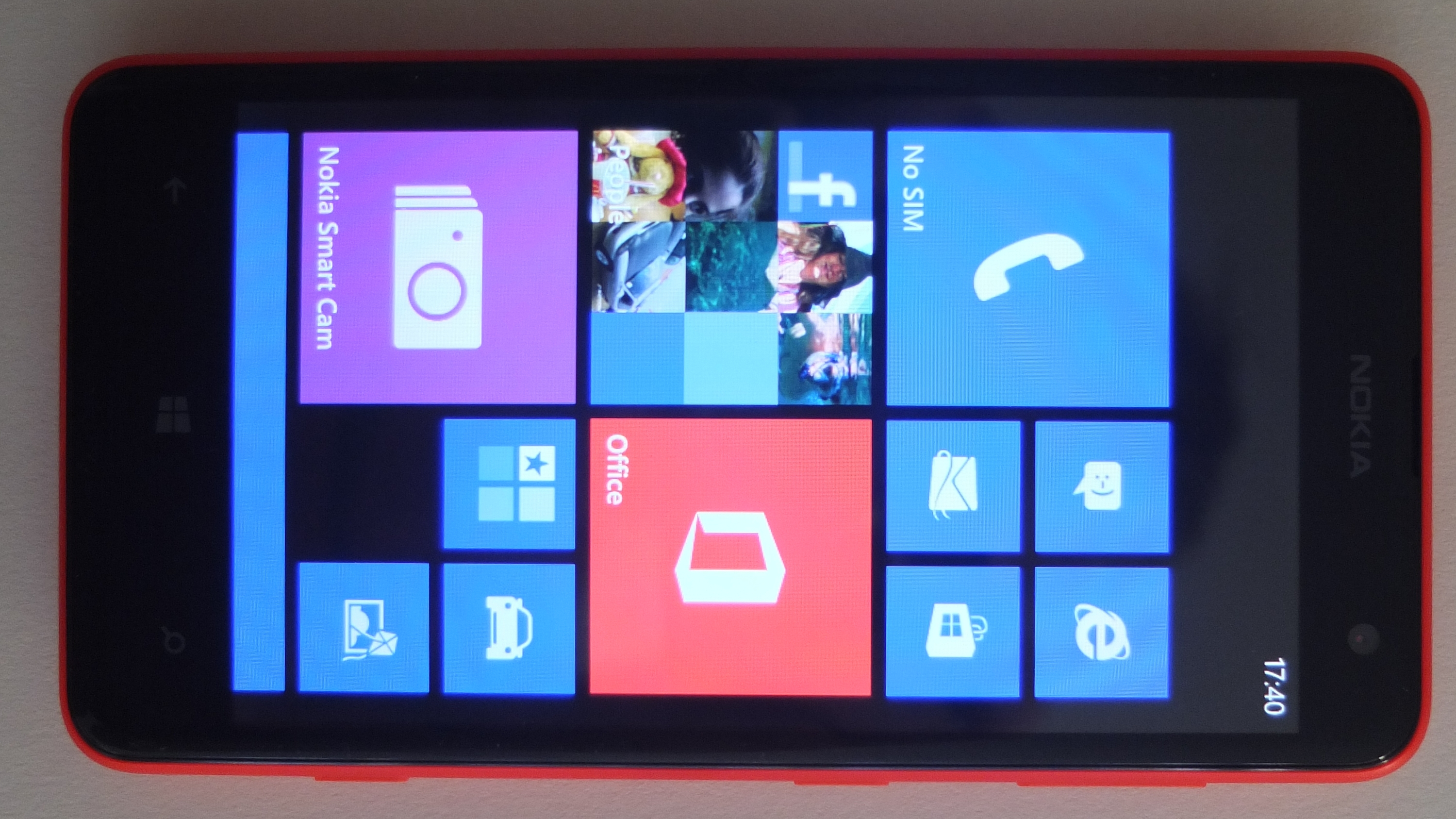
The 1.2GHz dual-core Snapdragon S4 processor in the Nokia Lumia 625 is faster than the processors in either the Lumia 620 or Lumia 720, both of which have 1GHz dual-core chips.
Sign up for breaking news, reviews, opinion, top tech deals, and more.
However it falls some way short of the 1.5GHz dual core processor found in the Lumia 820, while its 512MB of RAM is a match for both the 620 and the 720. Those specs might not sound like much but they're normally plenty enough for a low end Windows Phone 8 handset.
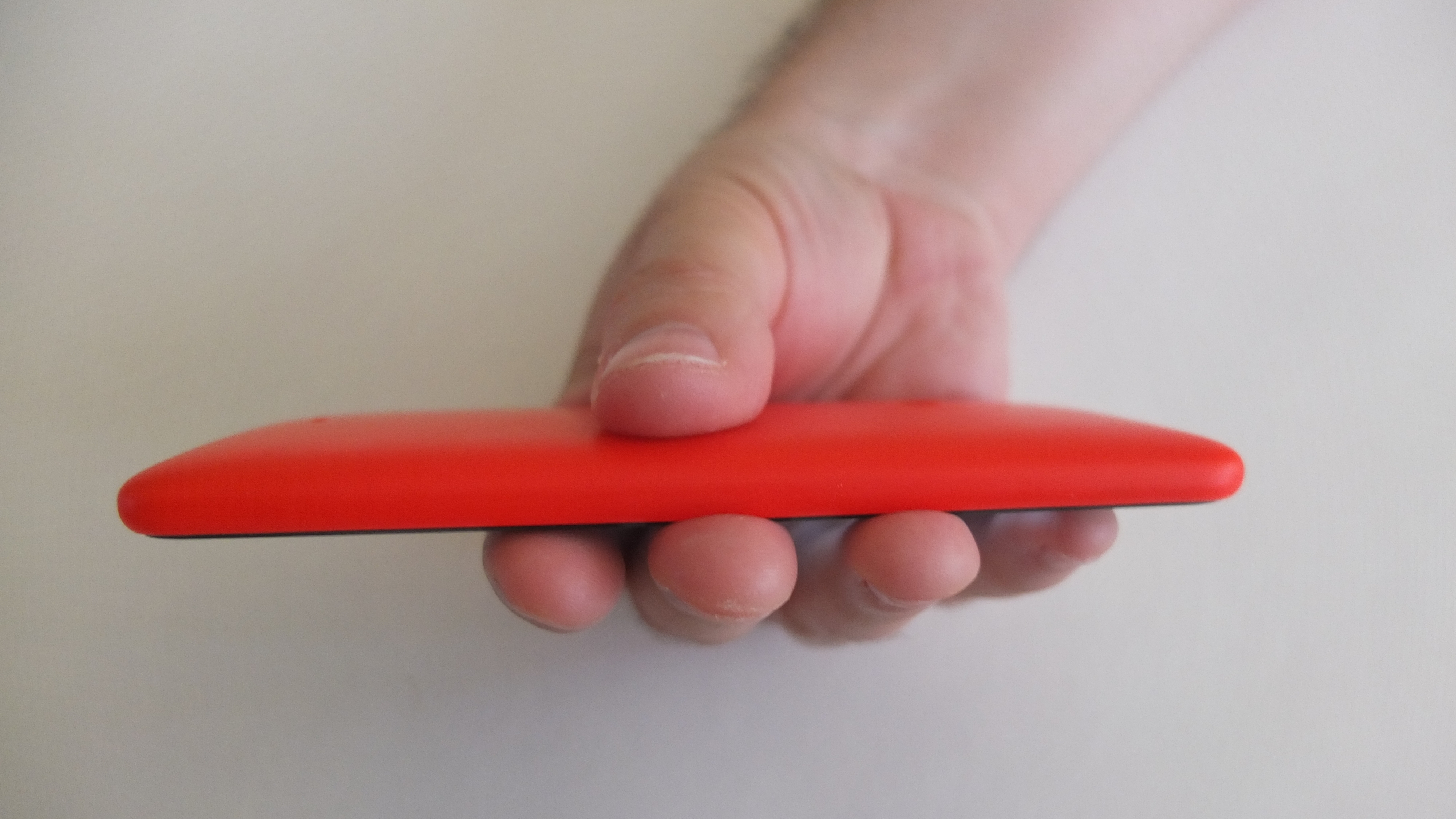
That said we're starting to see RAM creep upwards with newer budget Windows Phone devices, such as the Microsoft Lumia 640 and Nokia Lumia 635, both of which have 1GB to play with, not to mention quad-core processors.
With regards to the Lumia 625's looks it, well, looks like a Lumia - albeit a chunkier one than we're used to. The dimensions of 133.2 x 72.2 x 9.2mm make it the longer and wider than you might expect, though it's actually quite thin.
At 159g it's a heavy beast, outweighing even the Nokia Lumia 1020. Even for its size that's a lot of weight, as for example both the HTC One M9 and Samsung Galaxy S6 are lighter, despite touting larger screens.
The Lumia 625 isn't exactly going to weigh you down but it is noticeably heavy for its size and that can be a little off-putting.
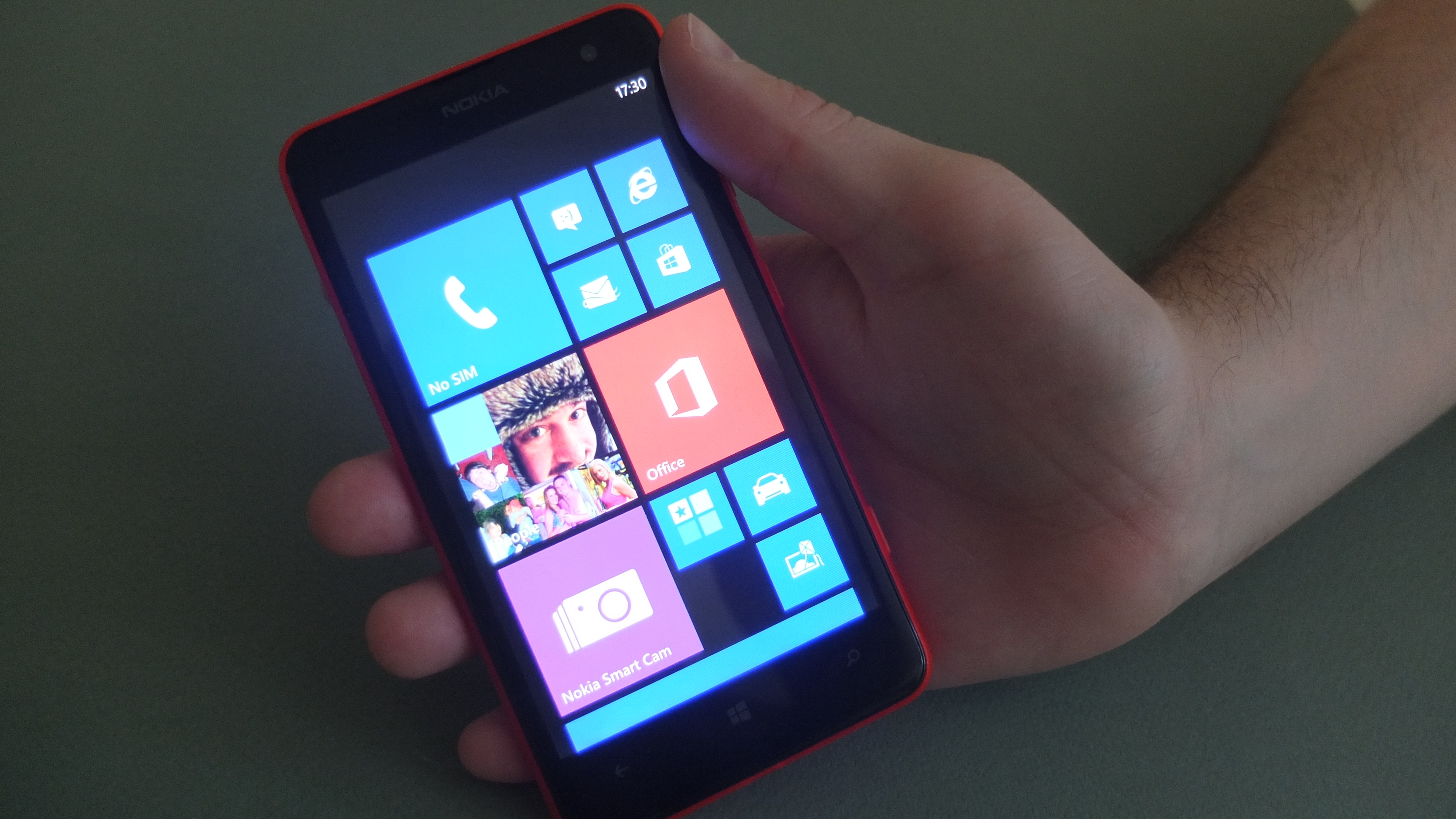
However, weight aside it feels reasonable to hold, with comfortable, slightly rounded edges. Though the screen is large enough that those with particularly small hands may need to stretch a bit to operate it one-handed.
Available in black, white, yellow, red or green, the Nokia Lumia 625 is just as colourful as we've come to expect from the Lumia range.
It's also just as plastic, with a removable polycarbonate shell. A premium body would be nice, but at this price it's not expected and most users will likely hide the phone in a case anyway.
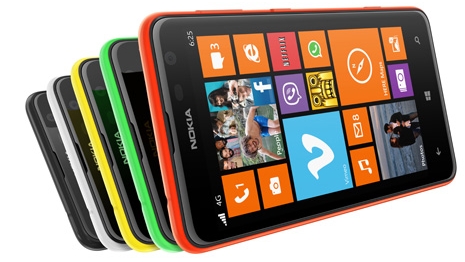
The front of the Lumia 625 primarily contains the 4.7-inch 480 x 800 IPS LCD display, with a pixel density of 201 pixels per inch. That's not a whole lot of pixels, as while the size has been bumped up dramatically from the 3.8-inch Lumia 620 the resolution has stayed the same.
That was presumably one of the cost-cutting measures required to actually make this handset possible at a low price, but the result is a screen that really is a little bit worse than we'd like and which has since been beaten by the likes of the similarly cheap Nokia Lumia 640.
Other than the screen the front of the Nokia Lumia 625 has black bars along the top and bottom which hold various buttons and sensors. The bottom bar has the three soft touch buttons you'll find on every Windows Phone 8 handset - back, start and search - while the top bar holds the earpiece, the 0.3MP front-facing camera lens and Nokia's logo.
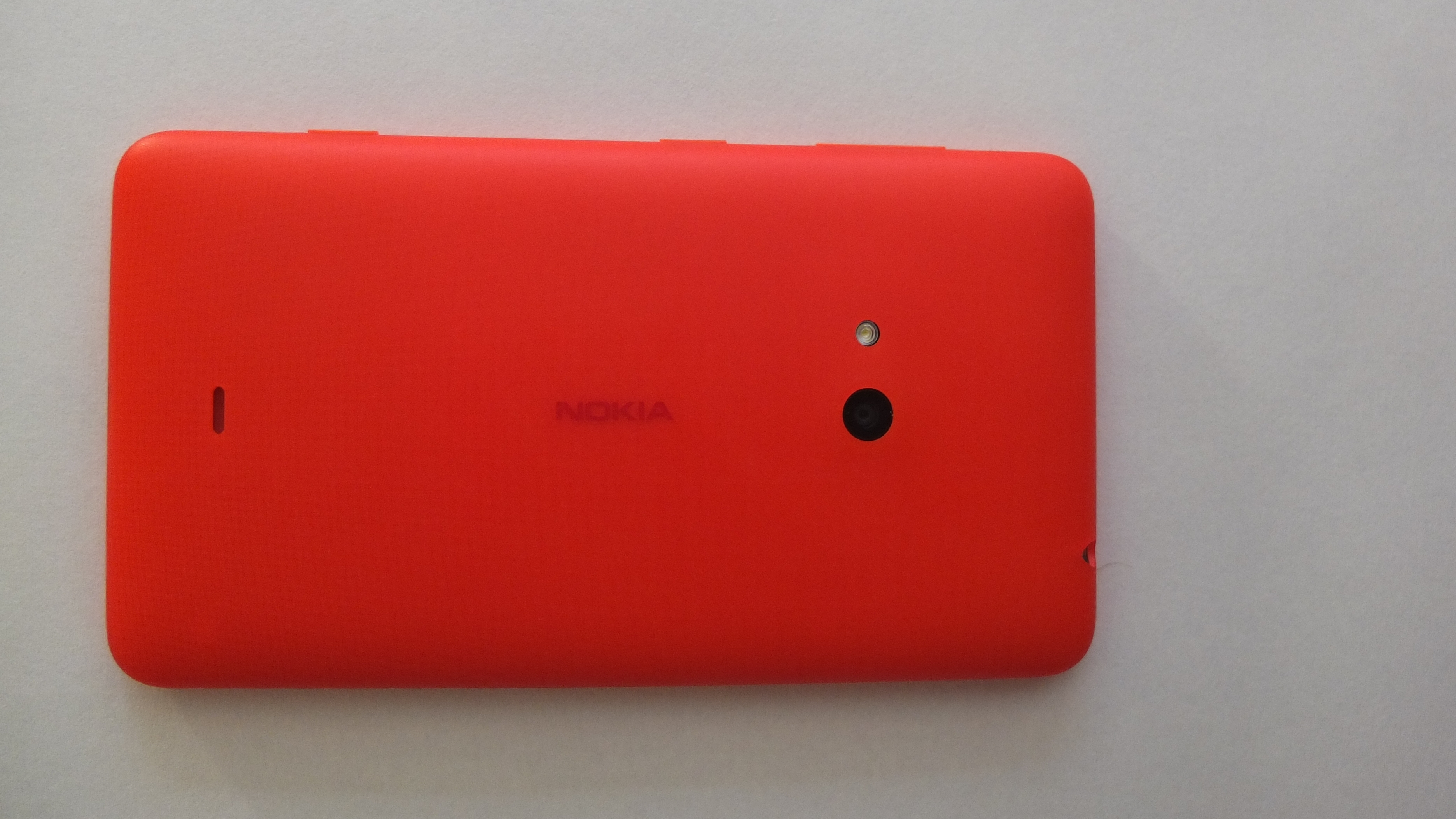
The back of the phone is incredibly plain as it's dominated by the almost featureless polycarbonate cover. However the flat expanse of colour is broken up by a few things.
There's another small Nokia logo across the middle, while near the bottom there's a speaker and towards the top there's the main 5MP camera lens and LED flash.
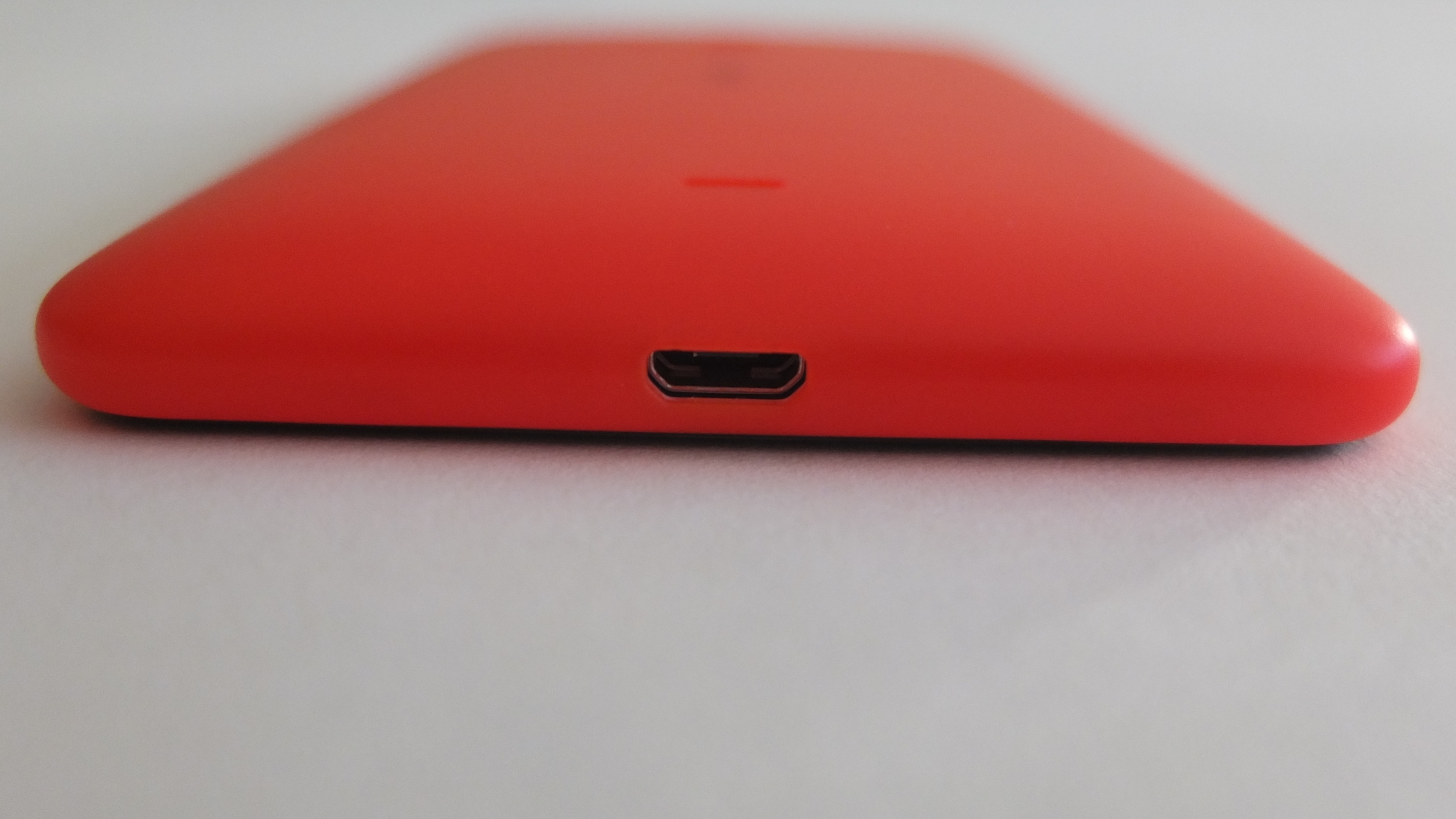
The bottom of the handset just has a micro USB port for plugging in a charger or connecting it to a computer.
The right hand edge has a camera button near the bottom, a power button in the middle and a volume rocker near the top, which like most things on this handset is standard Lumia design. The left edge has no buttons, ports or other features, and the top of the Lumia 625 merely has a 3.5mm headphone port.
In other words it's a fairly plain handset through and through but that's not necessarily a bad thing, as at least it avoids looking ugly, and if you've ever used a Lumia handset before you'll be right at home here.
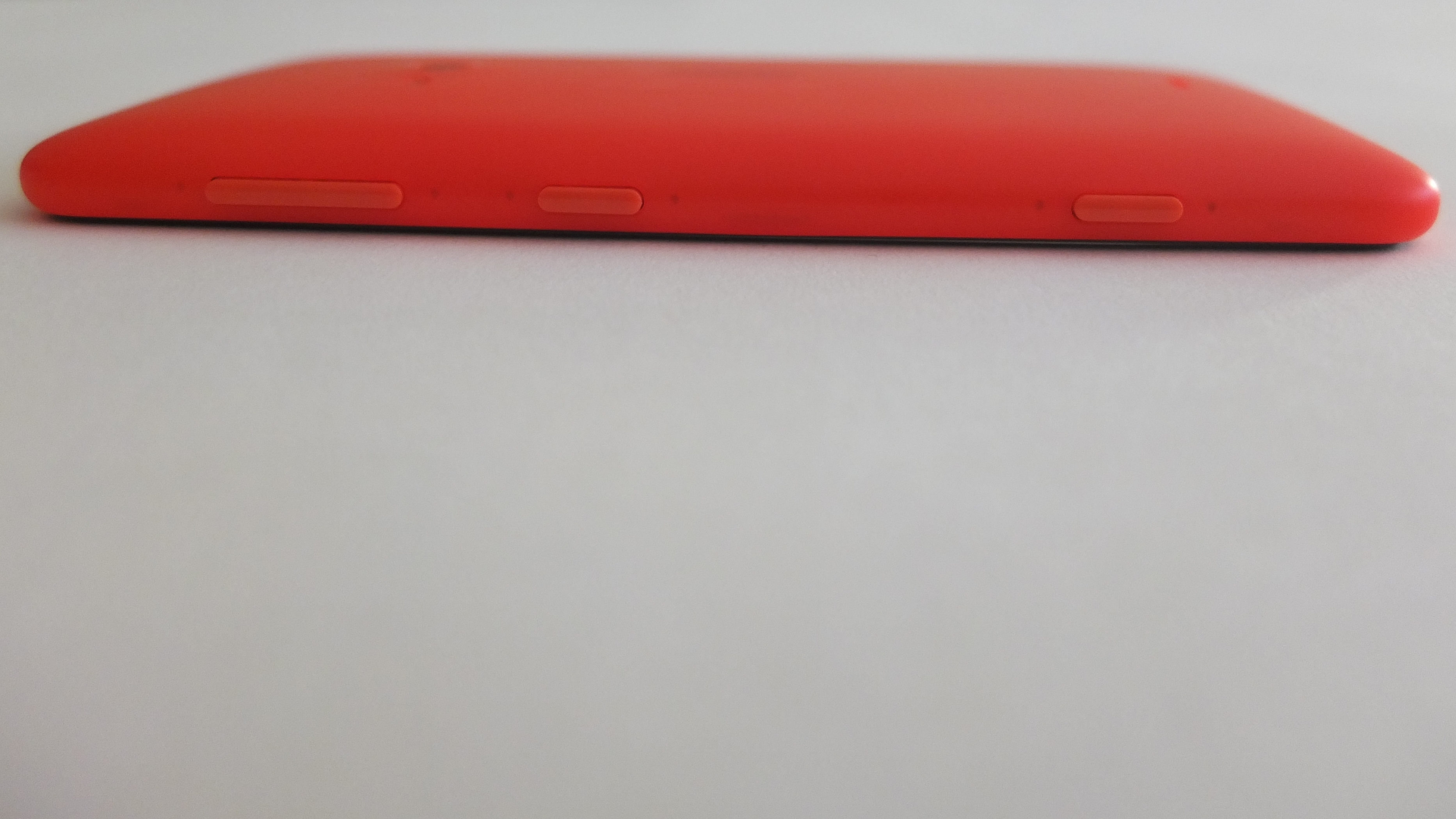
The back cover can easily be peeled off and underneath it you'll find the micro SIM card slot and a micro SD card slot which supports cards of up to 64GB, allowing you to boost the storage way beyond the 8GB that's built in.
You'll also find the 2000 mAh battery hidden back here, which is substantially bigger than the 1300 mAh battery that the Lumia 620 ships with, however while the one in the 620 is removable this one isn't. Plus with such a big jump in screen size the Lumia 625 will need all the battery it can get.
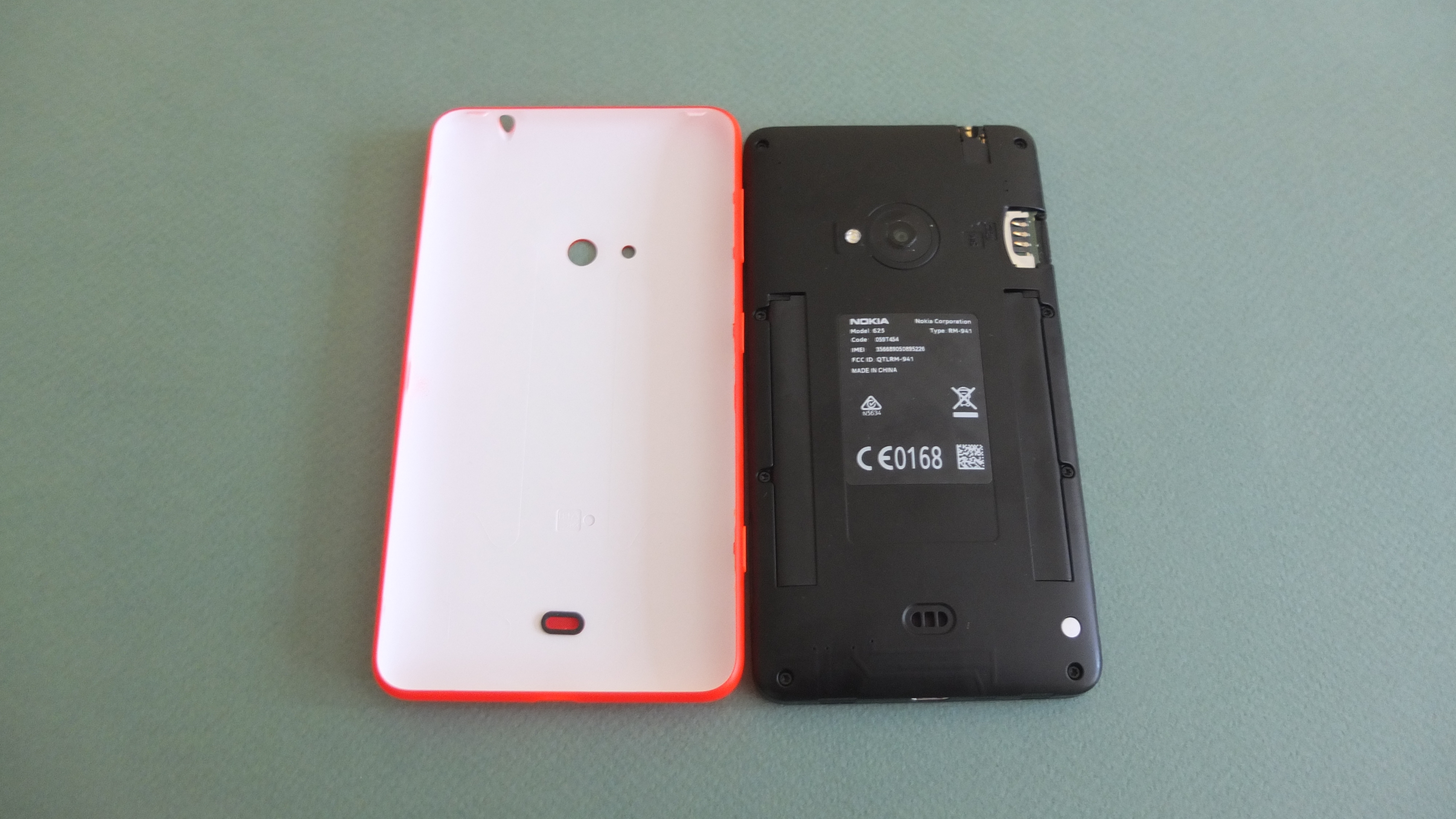
Ultimately then the Nokia Lumia 625 is aimed at those who want 4G and/or a big screen without breaking the bank. But with a disappointing resolution it might have its work cut out in attracting customers.
That isn't helped by its slightly confusing position in the Lumia range. The name suggests a handset that's slightly better than the Lumia 620, which it is in many ways, but at the £200 it launched at it was competing more with the Nokia Lumia 720 and 820 and despite seeing price drops since then it still finds itself up against newer and higher end phones, like the Microsoft Lumia 640.
It has a big screen going for it, but again the resolution lets it down somewhat. It seems to be aimed at a fairly narrow cross section of people, and doesn't fit neatly into the existing range.
James is a freelance phones, tablets and wearables writer and sub-editor at TechRadar. He has a love for everything ‘smart’, from watches to lights, and can often be found arguing with AI assistants or drowning in the latest apps. James also contributes to 3G.co.uk, 4G.co.uk and 5G.co.uk and has written for T3, Digital Camera World, Clarity Media and others, with work on the web, in print and on TV.
